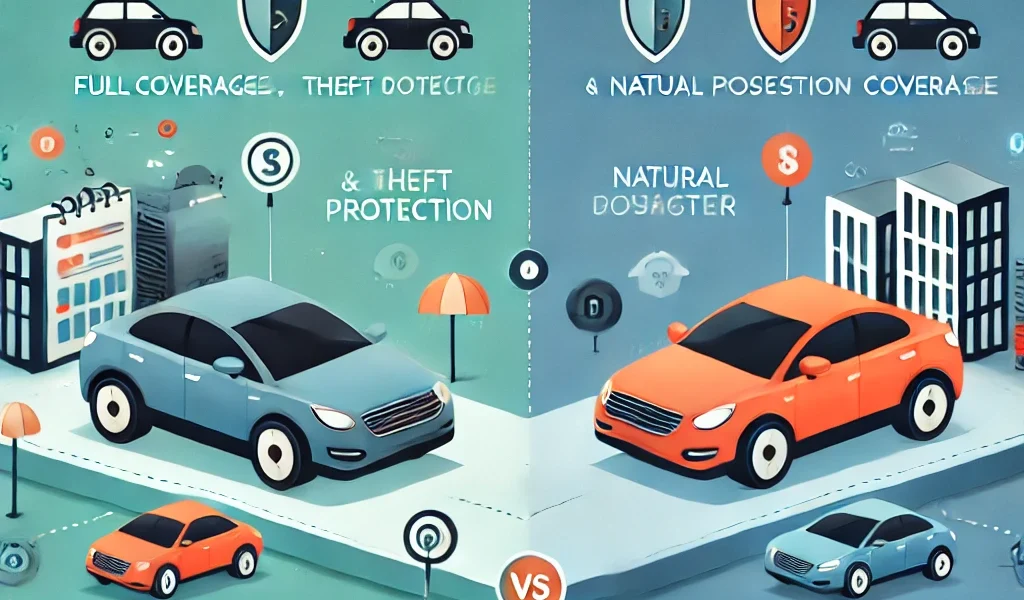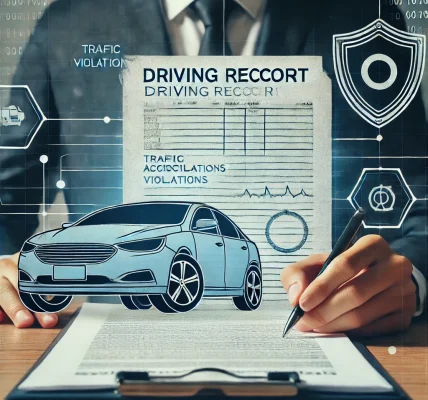Introduction
Car insurance is an essential part of vehicle ownership, ensuring financial protection in case of accidents, damages, or legal liabilities. However, choosing the right type of car insurance can be confusing, especially when deciding between Comprehensive and Third-Party car insurance.
Both types of insurance have their benefits and limitations, and selecting the right one depends on factors such as your budget, driving habits, and the level of protection you require. In this guide, we will break down the differences between comprehensive and third-party car insurance, helping you make an informed decision that suits your needs.
What Is Comprehensive Car Insurance?
Comprehensive car insurance is a policy that provides extensive coverage for your vehicle. It covers damages to your car, third-party liabilities, and other risks such as theft, fire, and natural disasters.
Coverage Offered by Comprehensive Car Insurance
- Damage to Your Car – Covers repairs or replacement costs due to accidents, vandalism, or falling objects.
- Theft Protection – Provides compensation if your car is stolen.
- Natural Disasters – Covers damages caused by floods, storms, earthquakes, and other natural events.
- Fire Damage – Protects against damage caused by fire or explosions.
- Third-Party Liability – Covers damages to other people’s vehicles, property, or injuries caused by your car.
- Personal Accident Cover – May include medical expenses or compensation for the driver and passengers in case of an accident.
Pros of Comprehensive Car Insurance
✅ Extensive Coverage – Covers both your vehicle and third-party liabilities. ✅ Financial Security – Protects against unexpected repair or replacement costs. ✅ Peace of Mind – Provides reassurance that your car is protected in various situations. ✅ Added Benefits – Some policies include roadside assistance, legal cover, and rental car reimbursement.
Cons of Comprehensive Car Insurance
❌ Higher Premiums – More expensive than third-party insurance due to broader coverage. ❌ Not Always Necessary – May not be cost-effective for older or low-value vehicles.
What Is Third-Party Car Insurance?
Third-party car insurance is the most basic and legally required type of car insurance in many countries. It covers damages and injuries caused to others by your vehicle but does not provide coverage for your own car.
Coverage Offered by Third-Party Car Insurance
- Third-Party Property Damage – Pays for repairs to another person’s vehicle or property if you cause an accident.
- Third-Party Bodily Injury – Covers medical expenses and legal costs if you injure someone in an accident.
Pros of Third-Party Car Insurance
✅ Lower Premiums – More affordable compared to comprehensive insurance. ✅ Meets Legal Requirements – Required in many countries to drive legally. ✅ Ideal for Older Cars – Suitable if your car has a low market value and does not justify expensive coverage.
Cons of Third-Party Car Insurance
❌ No Coverage for Your Own Car – You bear the cost of repairs or replacement if your vehicle is damaged or stolen. ❌ Limited Protection – Does not cover natural disasters, theft, or vandalism. ❌ Higher Out-of-Pocket Costs – In case of an accident, you will have to pay for your own damages.
Key Differences Between Comprehensive and Third-Party Car Insurance
| Feature | Comprehensive Insurance | Third-Party Insurance |
|---|---|---|
| Covers Own Car | ✅ Yes | ❌ No |
| Covers Third-Party Liabilities | ✅ Yes | ✅ Yes |
| Theft Protection | ✅ Yes | ❌ No |
| Natural Disaster Protection | ✅ Yes | ❌ No |
| Fire Damage | ✅ Yes | ❌ No |
| Medical Expenses for Driver | ✅ Yes | ❌ No |
| Cost | 💰 Higher Premiums | 💰 Lower Premiums |
Which One Should You Choose?
Choose Comprehensive Car Insurance If:
✔️ You own a new or expensive car. ✔️ You want full financial protection in case of an accident, theft, or natural disaster. ✔️ You drive frequently in high-risk areas. ✔️ You don’t want to worry about unexpected repair costs.
Choose Third-Party Car Insurance If:
✔️ You have an older or low-value car. ✔️ You are on a tight budget and need the most affordable coverage. ✔️ You rarely drive and are at low risk of accidents. ✔️ You only need to meet the legal insurance requirements.
Tips to Lower Your Insurance Premiums
Regardless of whether you choose comprehensive or third-party insurance, there are ways to lower your insurance premiums:
- Compare Quotes – Always get multiple quotes before purchasing a policy.
- Increase Your Deductible – A higher deductible can reduce your premium costs.
- Maintain a Clean Driving Record – Avoid accidents and traffic violations.
- Install Safety Features – Anti-theft devices and safety measures can earn discounts.
- Bundle Policies – Consider bundling your car insurance with home or life insurance for discounts.
- Opt for Pay-As-You-Drive Plans – If you drive less, some insurers offer lower rates based on mileage.
Conclusion
Choosing between comprehensive and third-party car insurance depends on your personal needs, budget, and the value of your vehicle. While comprehensive insurance provides all-around protection, it comes with higher premiums. On the other hand, third-party insurance is an affordable option that meets legal requirements but offers limited protection.
Assess your financial situation, driving habits, and risk factors before making a decision. Whichever option you choose, having car insurance is crucial to ensure peace of mind and financial security while on the road.



